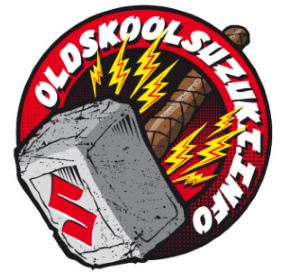-
Posts
5,755 -
Joined
-
Last visited
Content Type
Profiles
Forums
Events
Everything posted by Gixer1460
-
36 - 40 is relatively safe although I haven't tried that with 'modern' E5 and E10 fuels! I was running those numbers with a 1186 kit @ 12.5:1 CR that only pinked on one local hill during summer - that same engine with a spacer plate + turbo was used with same timing and leaded fuel . . . . 40 degrees and 10psi boost ! ! !
-
Looks like its done by 9.5k to me! Turbo's just don't need / want to go high rpm's
-
He ain't been back for over two years so don't hold your breath waiting for a reply!
-
Bit wary of this - Toyota have followed this route with millions of car engines in pursuit of improved economy (which it did) only to get thousands of warranty claims for major excessive oil consumption / top & bottom end failures due to low oil at really low mileages. As always 'there is no such thing as a free lunch' & if an OEM can get caught out ! !. Machining of the piston skirts is the basis of the 'slipper' style piston, they are ok for racing but the piston slap noise in a road engine is unacceptable IMO. There are loads of 'secrets' for reducing friction / rotating mass - like slimming down crank counterweights so x sectional area is less and so less windage then add back the weight at the tips using Tungsten slugs. Simple, effective but costly unless racing.
-
From a 'legal' standpoint E10 has to be 'lower' RON 95 octane, whilst E5 can have lower (or no) ethanol content but 'higher' RON 98/99 octane. I'm sure if you looked you could still find E5, 95 octane. But as most of the bikes we love were developed to run on really low octane fuels (90 ish), unless the timing curves are adjusted to suit a higher octane need / requirement (higher CR, turbo or nitrous use) there is little performance benefit from using higher octane fuels. I've seen lots of reports that engine runs smoother, less vibes, better fuel mileage - these are mostly subjective and not proven. In fact E10 gives a performance hit in that the fuel's energy content is less due to the increased % of alcohol, so you need to use more / richer mixture for the same power! Also a higher octane fuel used, burns slower so if the timing remains unaltered it will not achieve peak cylinder pressure till after the optimal point - less power is result. Funny how the Government don't publish that fact when promoting how 'green' this new fuel is - but you have to use approx 5% more to travel same distance and so buy more which of course means more fuel duty and VAT for the coffers - Cynical moi? No way!
-
And although 'ballpark', don't trust the timing marks for accuracy! Only way to reliably check is with degree wheel and / or timing light (although with a GSXR, that is a bloody messy operation!) I've never found any advantage of using anything other than curve #1 and timing total set anything between 36 - 40 degrees. If you have the 2000i version you could try putting a timing 'bump' in the mid-range / cruise area of 40 - 45 degrees then back off to around 36 deg for WOT. This is a profile often used with mapped ignitions to improve the burn around peak torque.
-
The two responders here are a damn sight brighter and cleverer in respect of this stuff and understand the numbers - something that has defeated me, so i'm a 'try it and see' type for development LOL! If I do another build, I will deffo use a BB type core, Maybe Garrett 28R or 30R based - its the housings and wheels where the secret sauce is hidden so listen to the two guys above!
-
The rust alone shows the water attraction problem! I'll be using ESSO E5 which they declare as ethanol free.
-
The use of electric vacuum pumps on ProStock bikes used to be popular on the 4 cylinder engines and the use of PCV valves in exhaust headers just before the megaphone was also a thing 'back in the day' - all to get less 'windage' in the crankcases.
-
It was your terminology that was causing confusion - why call the 'rotor' a cube? It replaces the std suzuki rotor, its circular and nothing like a 'cube'! BTW - its the limit tabs on the ATU that restrict the bob weights movement and the springs the rate at which they move. I can't see any advantage 'crushing' the rotor slots unless stopping ANY movement is what you want to do? I'm fully aware of how mechanical advance works but advancing base timing on (for example) a high comp engine will result in piss poor starting characteristics if you can get it to spin over at all! - GS's and GSX's in particular can break starter clutches in high CR engines. You need ALL the timing to be right and is why Digital timing gives better power and responsiveness throughout the power band as it can give spark at right time for load, rpm & current fuel.
-
You'll have to explain that better as it makes no sense to me!
-
Whilst the 'S' backplates do have larger slots, this only adjusts the base timing as an 'S' alone is a fixed timing device UNLESS paired with the std. ATU. I've never known anyone change the springs, bob weights or movement stops on these to achieve different rates of, or degrees of timing. Of course a dragbike with offboard starting can start with fixed timing at, say, 30 degrees BTDC but that would be a PITA for a road bike starter. Alternatively use the 'S' with a Schnitz box to control all the timing functions.
-
ANY decent boring place will bore the hole to suit the piston and number / mark them to ensure the correct piston stays with the correct hole! And whilst I know it happens, I don't agreed with using s/hand rings on s/hand pistons in fresh bored barrels as you've no control over ring end gaps unless they are too tight to start with - receipe for smokey engine. Its not a biggie but worth consideration IMO.
-
True - you've effectively taken 6 teeth off the rear which is a big change without other mods!
-
Shouldn't make any difference with that!
-
Yep - that gets everyone first time as it looks like it's been whacked with a hammer!
-
I'm only responding to the question asked. If done with a GSX then obvs the web is cut also and seeing as the GSXR did away with that feature I don't personally think block integrity is compromised.
-

Knock monitoring on turbocharged oil boiler
Gixer1460 replied to rider384's topic in Forced Induction
They aren't basic questions - they are pretty deep and generally unexplored as most people don't monitor knock, as to get right is quite difficult. You need to find a substantially thick part in the block to mount sensor then determine what you are hearing is knock or general noise. Mounts in the head are too noisy to be useful. Then you have to have a method of acting on it - with autos, the OEM's write the profiles for adjustment into software,we generally can't. -
Have u checked if pan is flat? New gaskets and RTV won't help if it's warped.
-
A. Not a hope in hell! B. Will run but likely to pink under any reasonable load. C. Power and / or torque costs money, small amounts can be got easily but decent figures get spendy!
-
Not so much just clever electronics which are now available to both turbo and nitrous installs but clutch and chassis too. I think if I was doing 1/8th mile grudge racing i'd choose Nitrous every time - nothing IMO, hits as well as gas! But over a 1/4, the turbo's top end wins 99% of the time
-
Look at the restriction / opening of the internal gate - the valve probably only lifts 3-4mm and the port is a straight drilled hole! Neither is good for flow. An external gate will usually have a bigger valve (35mm smallest i've seen in Tial range?) and can have better placement for exhaust flow gases. And internal gate can be made significantly better if the hole is enlarged to nearer the valve size and then the throat ported to improve the flow into the valve. Its unlikely to ever entirely remove 'creep' but should minimise it! IMO if you are seeing 15+ psi over boost - that isn't creep - that's a REALLY undersized WG! Adding an exhaust instead of a dump pipe won't help - it just adds back pressure which is the last thing a turbo wants!
-
In simplistic terms - you can change all the 'removable' jets but will always be stuck with OEM needle and needle jet / emulsion tube! This assembly covers fuelling from about 1/8th throttle to 3/4 throttle in rough terms so if the induction isn't as designed to work with that arrangement & in that range, you'll get poor running! The best example is removing the airbox from CV carbs - they generally won't rev out past 4.5 - 5k rpm which is smack in the middle or needle range. DJ kits mostly have different needles and emulsion tubes to combat that very problem. Dynojet have been around since the late 80's and developed kits for thousands of applications and for the most part they just work on modified induction systems short of swapping to slide carb alternatives. I've found they work - following the included instructions - out of the box with minor fine tuning on a dyno to get perfect. You may be able to fool yourself that changing OEM this and that, blasting up and down roads, taking carbs on and off, rinse and repeat LOADS of times is worth saving £££ - but is it really? I'd rather spend an hour, fit something that works and then just ride!
-
And the best manufacturer is the original OEM - even Funnybike drag racers use them in preference to any other! A lock-up has the advantage that you can use std. springs for nice 'easy to use' normal riding with the lock-up adding clamp pressure when its required!


